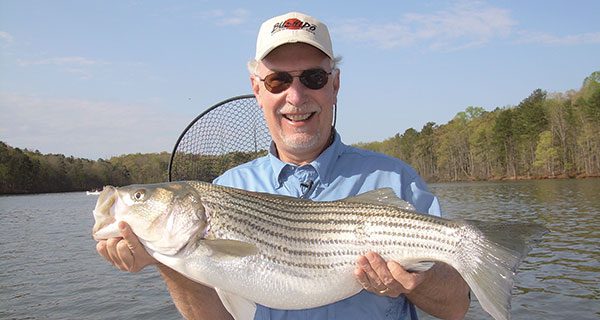As summer gives way to fall, the days begin to get shorter, and nights become a little cooler. These factors convince fish to start their semi-annual migrations to their winter hangouts. Essentially, you’re dealing with springtime fishing in reverse.
In September, and even into October, water temperatures can still be quite warm, but to a fish, even a couple of degrees can make a difference. As an example, on offshore trips looking for king mackerel, I’ve found a two-degree temperature differential made a significant difference in the number of fish caught. Inshore, the trout and flounder that have been hanging out in their summertime deep holes will move onto the grass flats and oyster bars. Stripers and bass will start to move from their deep water haunts up to the shallow humps and points looking for bait schools as they put on their winter feed bags.
While water temperatures do have a distinct effect, I think the number of daylight hours also plays a key role. As we go from 15 hours of daylight down to 10 or 12 hours, fish sense a changing of the seasons, and the transition begins. It’s the same natural phenomenon that heralds in the rut for deer.
The summer to fall seasonal change is one type of transition for anglers to think about, but the word ‘transition’ also conjures up several other thoughts as well.
One of the first images that come to mind, and also a key factor to finding fish, are underwater topographical transitions. Offshore, we are constantly looking for ledges, rock piles, sandy bottom transitioning to live bottom and reefs, and other things that stick out in an otherwise flat landscape. These places become congregating areas for baitfish, which attract the game fish. Wrecks and artificial reefs that present vertical relief will hold everything from grouper to amberjack, to kingfish and cobia. These are the obvious ones, but a small crack or ledge that’s barely visible on your sonar can be prime ambush habitat for mondo grouper and snapper. That’s where high-tech electronics becomes your best friend. DownScan and StructureScan can reveal small anomalies that turn out to be grouper gold mines.
Grass flats may seem like a huge underwater pasture to us, but a depression that drops one foot is a guaranteed fish attractor. Creek channels that empty onto a flat are another sure-fire hangout for big trout, reds and even cobia. Bass anglers know the fish-attracting power of underwater structure. Long points, rock outcroppings, and submerged timber all offer prime hunting grounds for freshwater predators. As the water begins to cool, start to look for those situations in shallower water.
Another piece of ‘gotta-have’ technology is SiriusXM Marine’s newest service: Fish Mapping. For offshore anglers, you can see Surface Temperature Contours, Plankton Concentrations, Surface Height Anomalies, even Fishing Recommendations…all on your chartplotter. This single tool can help you plan your trip and maximize your fish-catching potential.
The lesson here is to look at the changes that are about to occur, both in the weather and the changes that happen below the surface, and take advantage of them. Understanding how to take advantage of them will definitely improve your fishy adventures this fall.
